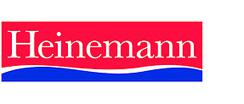- View more resources from this publisher
 Association for Science Education (ASE)
Association for Science Education (ASE)
Better Science 4: Approaches to Teaching and Learning
Approaches to Teaching and Learning was the fourth in a series of 12 booklets published by Heinemann and the Association for Science Education to explore the issues arising from moving towards a broad and balanced science education for all young people. The main purpose of this booklet was to explore questions such as:
*Why use an extended range of approaches?
*How will students benefit from learning through a greater variety of approaches?
*What are the purposes of education and what is the contribution of science education to the whole school curriculum?
*What are the different approaches to teaching and learning which have been tried and tested by teachers?
*How may an approach best be selected to provide for the required learning opportunities?
*How can students' progress in learning be monitored?
*How can teachers' effectiveness in providing enhanced learning opportunities/outcomes be evaluated?
Contents
Introduction
SECTION ONE Context and rationale
*Introduction
*Why use a wide range of learning approaches?
*What does science contribute to the general education of young people?
*How can the purposes of school science be translated into an effective model for classroom teaching?
SECTION TWO Selecting an approach
*Introduction
*How can approaches be selected to implement the interactive curriculum model?
*How can learning approaches best be selected in order to meet specific aims and purposes?
*Which learning outcomes?
*Using the instrument: an example
SECTION THREE The 'ideas bank' of exemplars
*Introduction
*What is meant by 'approaches'?
*Which approach do we refer to?
*The layout of the exemplars
*The exemplars
SECTION FOUR Monitoring students' progress and teachers' effectiveness
*Introduction
*What are the benefits to students?
*Initiating problem solving
*What can be learned from their comments?
*What are the experiences of other teachers using new approaches?
*What methods could be used to collect the evaluation evidence?
*The teacher as ‘action researcher'
SECTION FIVE Ways and means
References
Show health and safety information
Please be aware that resources have been published on the website in the form that they were originally supplied. This means that procedures reflect general practice and standards applicable at the time resources were produced and cannot be assumed to be acceptable today. Website users are fully responsible for ensuring that any activity, including practical work, which they carry out is in accordance with current regulations related to health and safety and that an appropriate risk assessment has been carried out.





